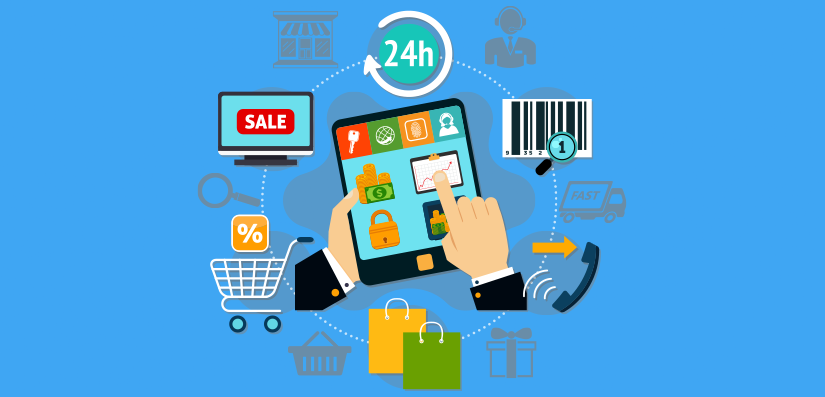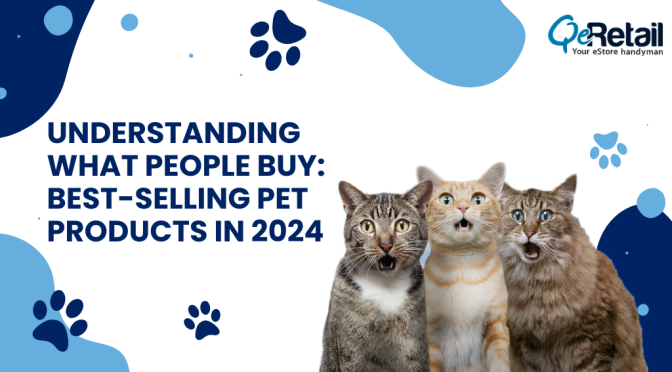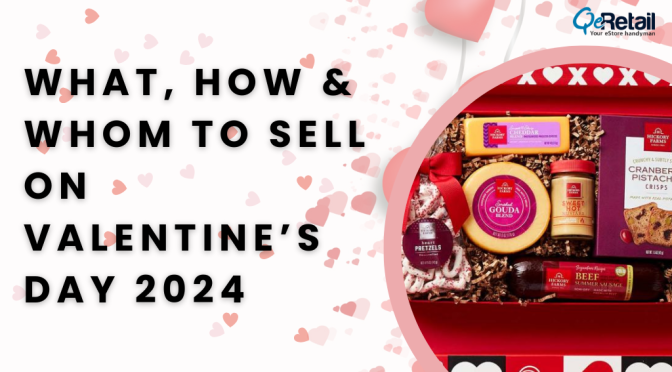An online store has the potential to reach far more people than a brick-and-mortar store- if you can get them to see your products. An online store has to compete for customer attention with other retailers, big and small, worldwide. The more effective your marketing strategy, the better you’ll be able to drive traffic to your store.
Your potential audience can be broken down into three main groups:
- Those already know your brand
- Someone interested in the products you offer, but unaware of your store existence
- People interested in the products you offer, but don’t know they exist.
There are different approaches to boosting traffic depending on which of these groups you want to target. Here are some great eCommerce Marketing Tips to explore:
Table of Contents
Top 11 eCommerce Marketing Tips
1: Attract local customers at community events and markets.
People like shopping locally, primarily if they can support a local business while still enjoying the online shopping convenience. Most people don’t think to search out local stores online, so you’ll need to let them know you exist, especially if you don’t have a brick-and-mortar location.
For the best results, choose a venue that’s matched to your product. Grace Harbor Farms has an online store selling goat milk soap and lotions. As mentioned in this business interview, their presence in local farmer’s markets has helped drive local buyers to their online store. Depending on what products or services you sell, participating in events like trade shows, arts festivals, flea markets, or the exhibit hall of professional conferences can all be viable options.
2: Give customers a reason to follow you on social media.
Having an active social media presence increases your brand’s visibility. The most effective social media marketing campaigns will post content that customers want to engage with on the platforms they’re most likely to frequent.
The most effective social media platforms from an eCommerce perspective are Facebook, Instagram, and Pinterest. Video-based platforms like YouTube or TikTok are great, too, letting you post product demos or reviews that educate (and nudge) customers why they should buy your product.
Once you’ve chosen your platform, post content that’s entertaining or starts a conversation. This will be more likely to improve results in follows, subscriptions, likes, and comments than posts that read like sales pitches. The more engagement you get on your channel, the higher it will rank in search results, and the more potential customers will see it.
3: Incentivize customer referrals.
People are more likely to buy a product recommended to them by a friend or family member. That’s the basis of referral marketing, encouraging your existing customers to share your brand within their social network.
Referral bonuses are an excellent way to nudge existing customers to tell their friends about your store. They also boost brand loyalty from your current customers, who will appreciate getting a special gift or a discount on their next purchase.
For instance, if your company has a lot of expertise on a particular topic, you can host a webinar monthly that shares your knowledge with the individuals who have referred new customers over. It’s great to share a monetary benefit as well, but sometimes education itself is enough.
4: Build (and use) your email list.
People who sign up for your mailing list are already interested in your brand, making it an excellent segment to target when you’re trying to boost sales and conversions. Make it easy for customers to add themselves to the list, both on your website and in-person at events or a brick-and-mortar location.
Your communication with your email list should be steady but not excessive. A monthly newsletter announcing new products and upcoming events keeps your brand on customers’ radar without becoming obnoxious.
Just like with referrals, incentives can help here, too, both in generating new sign-ups and getting existing customers back in your store. Offer a discount when you sign up for the list or exclusive coupons for mailing list subscribers. This lets you give customers a perk while still generating revenue from the sale.
5: List your products on Google Shopping.
Adding your products to Google Shopping lets you reach a vast number of potential new customers. Since Google Shopping uses your store’s existing listings for their ads, it’s also a low-effort option for business owners and doesn’t require a ton of set-up to get started.
The trick to using Google Shopping effectively is to target your ad campaigns to accurate search terms and customers. Placing your product in a specific category and using strong keywords in the title and description will help with this. You can also use negative keywords to filter out low-conversion or irrelevant search results.
6: Increase your brand awareness through influencer marketing.
People trust product recommendations from the influencers they follow, almost as much as they trust friends and family’s advice. According to Nielsen, 92% of consumers trust influencers more than paid ads.
Start by finding influencers in your niche. Sites like BuzzSumo, Upfluence, NinjaOutreach, and IZEA are great places to search for top influencers across platforms.
Once you’ve identified the top influencers, connect with them by following their channels and engaging with their posts. Taking the time to establish a relationship makes it more likely your product pitch will be accepted out of the hundreds of requests they get.
7: Encourage your customers to advertise for you.
Shares and re-tweets are the social media version of word-of-mouth advertising. It’s an excellent way to increase your visibility without investing any extra time or money. This will happen naturally if your posts are entertaining and engaging, but there are also some easy ways to encourage it.
Contests and giveaways are an excellent option. Set up a unique hashtag to pair with the event. It could be as simple as entering everyone who posts using it into the prize drawing or a more complex and fun contest that asks users to take photos or create original content based on a theme.
These kinds of fun online events don’t just increase your brand’s recognition but provide user-generated content that can be used to drive engagement among your current followers.
8: Drive site engagement by posting helpful content.
The more people visit your site on a regular basis, the more likely they’ll be to stop by your store—and, hopefully, make a purchase.
Content marketing isn’t a quick fix. When you’re just starting, it can take a while to build a solid base of valuable content. However, in the long-term, effective content marketing establishes you as an expert in your niche, building trust and driving more traffic to your site.
Text-based blog posts aren’t the only way to do this, either. Consider utilizing how-to videos or creating visual stories with step-by-step pictures.
9: Ask for reviews from satisfied customers.
Reviews are a huge factor in customer purchasing decisions. The data shows the likelihood for purchase of a product with 5* reviews is 270% higher than for one with no reviews. Unfortunately, angry and disappointed customers are much more likely to leave reviews than those who had a good experience.
A simple post-sale email asking for a review is sometimes all the nudge a customer needs to swing by and leave positive feedback. You could also incentivize reviews with loyalty points or a virtual punch-card system, letting customers earn discounts or perks if they regularly return to leave reviews on purchased products.
10: Use remarketing to turn near-misses into conversions.
Customer research shows that 96% of first-time visitors to online stores aren’t ready to purchase, i.e., the online equivalent of “window shopping.” On the flip side, roughly 26% of those customers will return to a site when they’re ready to buy if they’re sent targeted remarketing materials.
Remarketing keeps your brand on the radar of people who have already shown interest and are the most likely to make a purchase in the future. This could take the form of targeted ads on Google Shopping or email marketing campaigns targeted to cart abandoners.
11: Access new customers by partnering with other brands.
You don’t have to view other small businesses as competition. A partnership with a complementary brand can be a symbiotic relationship, boosting your sales and customer visibility.
The best brands to partner with are those in peripheral niches, selling services or products that are similar to but not identical to yours. For example, if you sell shoes, you could partner with other fashion brands selling clothing, jewelry, or other accessories. You could also form partnerships with similar services, like a lotion manufacturer pairing up with a massage parlor or spa.
Another way to form partnerships is to find other companies that share your values and culture. If you sell eco-friendly cleaning products, you can partner with other businesses that emphasize sustainability, a deal both of your customer bases are likely to share.
What’s the Bottom Line?
As we said in the intro, which marketing approach is best will depend on the type of customer you’re trying to target. Your first step should always be a careful analysis of your customers’ shopping and browsing habits. This can help you identify which segment of your potential customer base will give you the best returns from targeted marketing.
These tips aren’t a complete list. There are tons of ways to market to customers, and the more unique, the better for catching their attention. The ideas here should at least give you somewhere to start, though, and can all be very effective ways to generate more traffic and revenue in your online store.
eCommerce Marketing Tips. eCommerce Marketing Tips. eCommerce Marketing Tips
Sergei is an innovative entrepreneur with a myriad of experience in marketing, real estate, and business. He is the CEO of UpFlip, which, whether you’re buying or selling, connects you with other investors quickly and easily. Business, commercial, franchise, rental and online commerce — UpFlip does it all!







